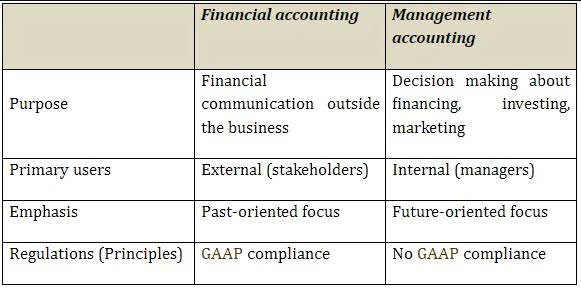
The allowance’s primary purpose is to reduce gross Accounts Receivable to its net realizable value, which is the estimated cash a company expects to collect. This practice upholds the matching principle, recognizing expenses in the same period as related revenues. It also aligns with conservatism, ensuring assets are not overstated and losses are recognized promptly. The ADA is recorded on the balance sheet as a contra-asset, directly subtracting from gross accounts receivable to report net accounts receivable. This means that the customer’s balance is still recorded in the receivables account. Monitoring this ratio regularly allows businesses to identify trends and issues early, enabling timely strategic adjustments.

Why This Actually Matters

It prevents the overstatement of assets and income, enabling better financial decision-making and compliance with accounting principles, thereby fostering trust among investors, creditors, and other stakeholders. Bad debt impacts financial statements by increasing expenses and thus reducing net income on the income statement. It also reduces the receivables value on the balance sheet through the allowance for doubtful accounts, ensuring assets are not overstated. Offering discounts can incentivize timely payments, reducing the likelihood of bad debt. However, it’s essential to balance discounts with the overall financial health of the company.
Quick Guide to Allowance for Doubtful Accounts and Bad Debt Expense
This clarity allows for an immediate reflection of financial loss on the income statement. The allowance for doubtful accounts is a contra-asset account used to estimate the portion of receivables that may become uncollectible. Its primary purpose is to present a realistic view of a company’s financial position by accounting for potential losses in accounts receivable.
Recording Uncollectible Accounts
Perhaps a customer emerges from bankruptcy with some ability to pay, or a collections agency https://prod.kinomad.fr/what-is-the-correct-order-of-assets-on-a-balance succeeds after the account was deemed hopeless. Since a small percentage of customers often represent a large portion of receivables, some companies employ Pareto analysis (the 80/20 principle). They focus their estimates on major accounts that constitute most of their receivables.

- This method categorizes outstanding Accounts Receivable by how long they are due, applying different uncollectible percentages to each age category.
- The allowance for doubtful accounts is a contra-asset account used to estimate the portion of receivables that may become uncollectible.
- Think of it as a pre-emptive “not getting paid” fund, so your books don’t look like a fairy tale.
- We explain the journal entry for allowance for doubtful accounts to ensure your financial statements are accurate and realistic.
- Offering discounts can incentivize timely payments, reducing the likelihood of bad debt.
Instead, companies use historical patterns, customer data, and economic trends to make estimates. The allowance for doubtful accounts represents management’s estimate of how much of accounts receivable will likely go uncollected. At the end of each period, update the allowance for doubtful accounts is a contra asset account that equals: your allowance with adjusting entries so your expenses match revenue (hello, matching principle!). Skip the allowance and your financial statements will look like you’re rolling in cash—even if you’re not. Overstated assets and revenue are a one-way ticket to bad investments and investor disappointment. The customer who filed for bankruptcy on August 3 managed to pay the company back the amount owed on September 10.

- When a company sets up its allowance for doubtful accounts, it creates two simultaneous accounting entries.
- It does not necessarily reflect subsequent actual experience, which could differ markedly from expectations.
- Bad debt impacts financial statements by increasing expenses and thus reducing net income on the income statement.
- This amount is referred to as the net realizable value of the accounts receivable – the amount that is likely to be turned into cash.
- This write-off does not impact net income or total assets at the time it occurs, as the bad debt expense and asset value reduction were already recognized when the allowance was established.
The company would then reinstate the account that was initially written off on August 3. Look out for companies that switch estimation methods, which might be done to manipulate earnings. Nevertheless, auditors look closely at changes in methodology and whether they’re justified by actual collection experience.
- If collection efforts are more successful than anticipated, the company might cut its allowance, decrease bad debt expenses, or even record a gain from recovery.
- Understanding how businesses account for potential failures to pay makes how a firm manages risk far clearer.
- Look out for companies that switch estimation methods, which might be done to manipulate earnings.
- Economic conditions change, customer payment patterns evolve, and the receivables balance fluctuates.
- Later, a customer who purchased goods totaling $10,000 on June 25 informed the company on August 3 that it already filed for bankruptcy and would not be able to pay the amount owed.
Direct Write-Off Method Explained
First, it records a “bad debt expense” that reduces the current period’s profit. Second, it creates a contra asset account called “allowance for doubtful accounts” that reduces the reported value bookkeeping of AR without changing the underlying customer balances. The Allowance for Doubtful Accounts is a balance sheet contra asset account that reduces the reported amount of accounts receivable. Aligning with IRS guidelines is essential for maintaining compliance and ensuring allowances for bad debts are accurately reported for tax purposes.
- Since a small percentage of customers often represent a large portion of receivables, some companies employ Pareto analysis (the 80/20 principle).
- It also reduces the receivables value on the balance sheet through the allowance for doubtful accounts, ensuring assets are not overstated.
- Secondly, it allows businesses to anticipate financial risks, thus fostering better cash flow management and enabling proactive adjustments in credit policies.
- The choice depends on the company’s nature and historical experience with bad debt.
- Sure, they take the first punch if a customer ghosts, but if the BNPL provider collapses or chargebacks spike, you—the merchant—could still get burned.
Pareto Analysis Method
Dissatisfaction and disagreement with customers can lead to non-payment, emphasizing the need for strong customer relations. By maintaining clear communication and providing excellent service, companies can mitigate the risk of bad debt and enhance liquidity management. The Allowance for Doubtful Accounts is a reserve businesses use to estimate the portion of money owed by customers that will not be collected. This allowance helps present a realistic view of a company’s financial position, ensuring financial statements accurately portray asset value. This accounting practice not only provides a more accurate picture of a company’s financial health but also aligns with key accounting principles that govern financial reporting.
